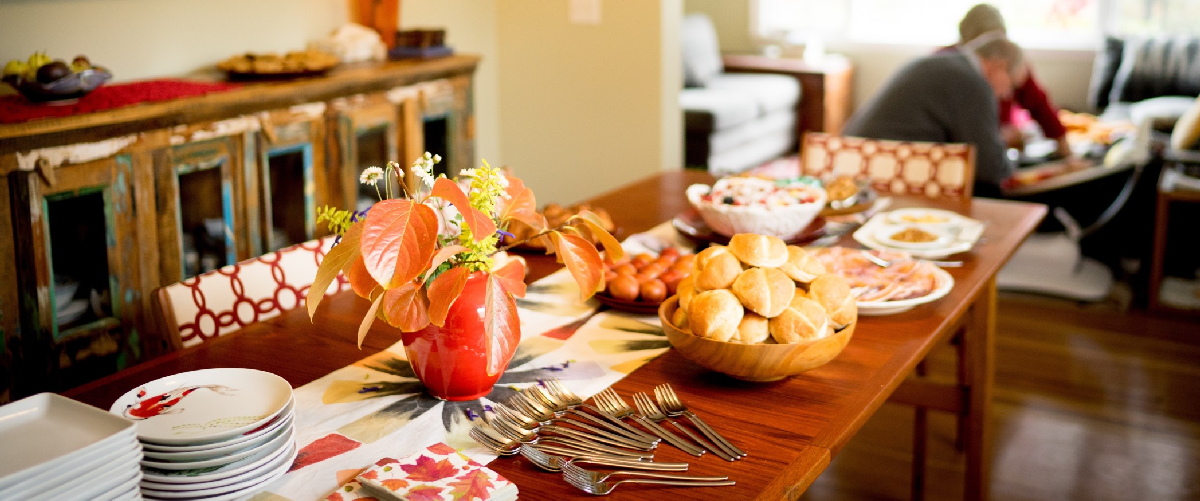Thanksgiving and other big holiday meals come with a lot of pressure—decorating the table, getting the turkey just right, ensuring the perfect mix of family favorites. Among all this hustle and bustle, something important can get overlooked: food safety.
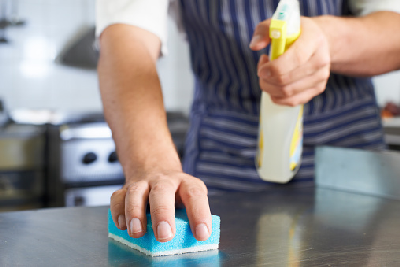 You can’t see, taste, or smell the bacteria that can be on food or kitchen surfaces, but they can certainly spoil the celebration. The good news? Beyond the golden rule of washing your hands—and often!—there are other simple food safety and storage strategies that can help you prepare a safe and delicious holiday meal – and better savor the leftovers!
You can’t see, taste, or smell the bacteria that can be on food or kitchen surfaces, but they can certainly spoil the celebration. The good news? Beyond the golden rule of washing your hands—and often!—there are other simple food safety and storage strategies that can help you prepare a safe and delicious holiday meal – and better savor the leftovers!
PREPARING YOUR FEAST THE SAFE WAY
Plan ahead for thawing. Thaw frozen foods in the refrigerator, which is a safer method than using cold water or the microwave. This could take a while. The star of the show—turkey—will take 24 hours for every four to five pounds to safely thaw in the refrigerator. Never thaw foods in a garage, basement, or outdoors; no matter how cold they are, you can’t control the temperatures.
Rinse produce. Wash fruits and vegetables in cold water to remove dirt and bacteria. Don’t rinse raw meat or poultry—that only spreads the raw juices (and any bacteria that might be present) to your sink and countertops.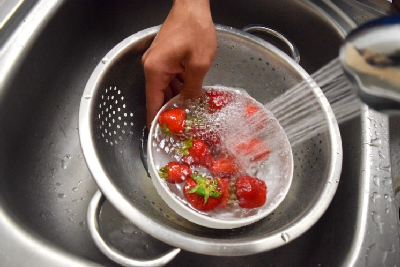
Keep it clean. Clean kitchen counters, cutting boards, and utensils with hot water and soap. Use a separate cutting board for all raw meat and poultry, and don’t let cooked foods touch the same unwashed surfaces as raw ones.
Invest in a food thermometer. A food thermometer is the only accurate way to tell a food’s temperature. Know what temperatures food needs to reach. For example, turkey is considered done at 165 degrees Fahrenheit. See this chart for safe minimum cooking temperatures of common foods.
Follow the two-hour rule. Keep cold foods cold and hot foods hot. Any cold food that goes above 40 degrees and hot food that falls below 140 degrees for more than two hours enters the “Danger Zone,” where bacteria starts to multiply rapidly. A warming drawer, slow cooker, and cooler can be your best friends for large, prolonged celebrations.
SAFELY SAVING IT FOR LATER
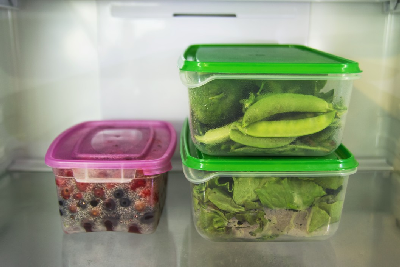 Wrap it right. Refrigerate leftovers in shallow pans or containers to decrease their cooling time. When freezing, tightly cover them in freezer paper, plastic wrap, freezer bags, or foil. This will help prevent freezer burn. Store everything in single portions and they’ll be even easier to enjoy later on.
Wrap it right. Refrigerate leftovers in shallow pans or containers to decrease their cooling time. When freezing, tightly cover them in freezer paper, plastic wrap, freezer bags, or foil. This will help prevent freezer burn. Store everything in single portions and they’ll be even easier to enjoy later on.
Fill the fridge. Most cooked leftovers will be good in the refrigerator three to four days. Raw ground meats and poultry, however, will last only one to two days.
Optimize shelf space. If your fridge has designated compartments for cheese, fruits, vegetables, meats, and poultry, use them. These will provide the ideal temperatures and humidity levels. One exception: Don’t leave eggs and other highly perishable items in the refrigerator door, because their temperature will fluctuate too much as it is opened and closed. Place these on a shelf instead.
Establish a freezer system. You can freeze almost any food! Anything stored at zero degrees or colder will always be safe to eat, but you may notice a decline in appearance and taste over time. Solve this problem by dating all frozen foods, placing new items toward the back of the freezer, and using older ones first. Follow this guide to fridge and freezer storage times for optimal safety and quality.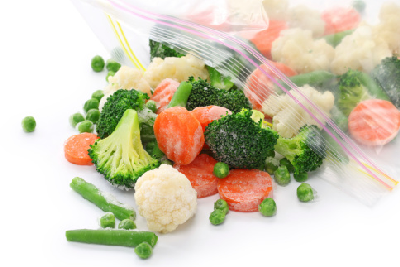
When in doubt, throw it out. If you’re ever unsure how long something has been unrefrigerated or stored in the fridge, or if it looks or smells a little “off,” don’t take chances. Toss it—and be better safe than sorry.
Holiday health means more than watching portion sizes and eating your veggies. It also means following best practices for food preparation and storage so your hard work can be enjoyed on Thanksgiving Day and beyond. Your favorite foods will enjoy a second life as you turn leftovers into soups, casseroles, sandwiches, and more. (Bonus: This also helps avoid food waste.)
Here’s to a safe and tasty holiday season!
Note: Since everyone’s health history and nutritional needs are so different, please make sure that you talk with your doctor and a registered dietitian to get advice about the diet and exercise plan that‘s right for you.

